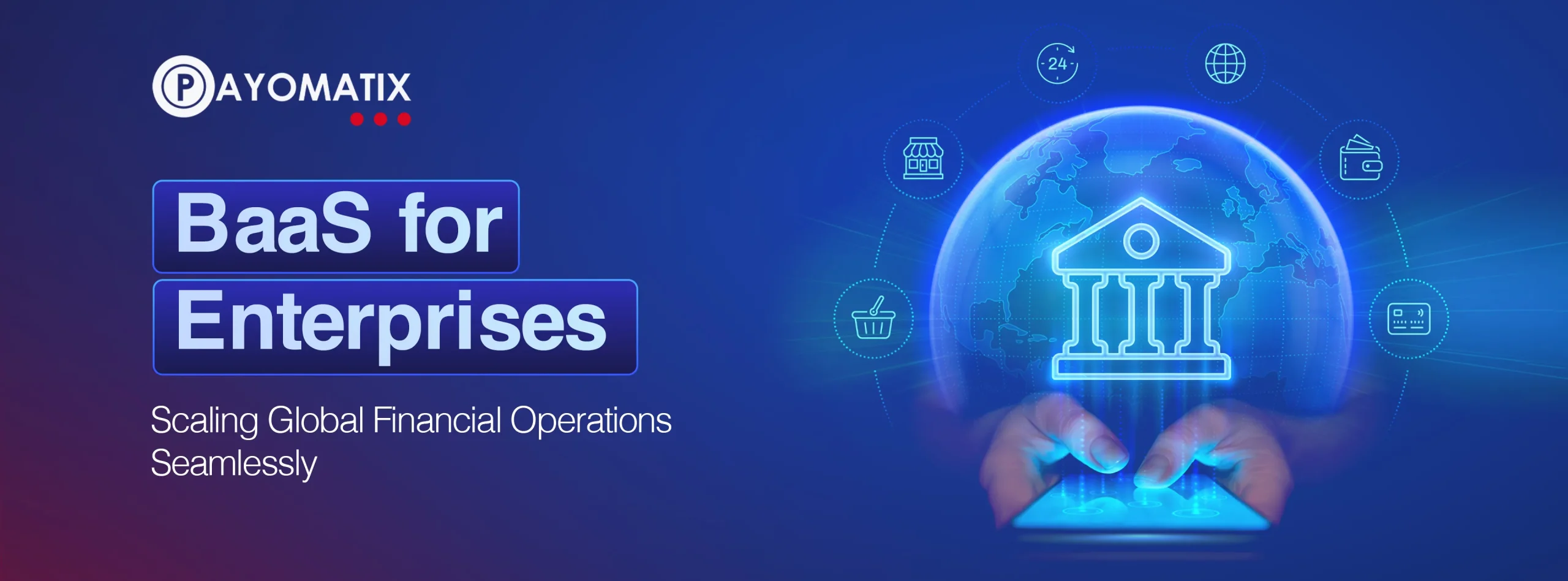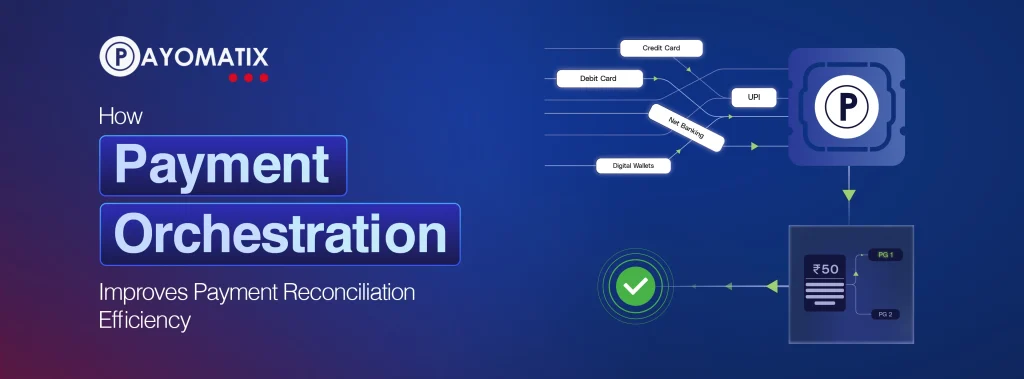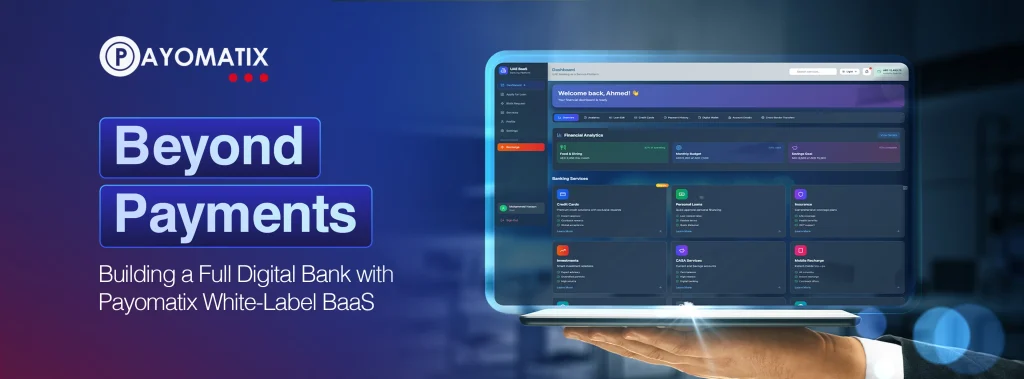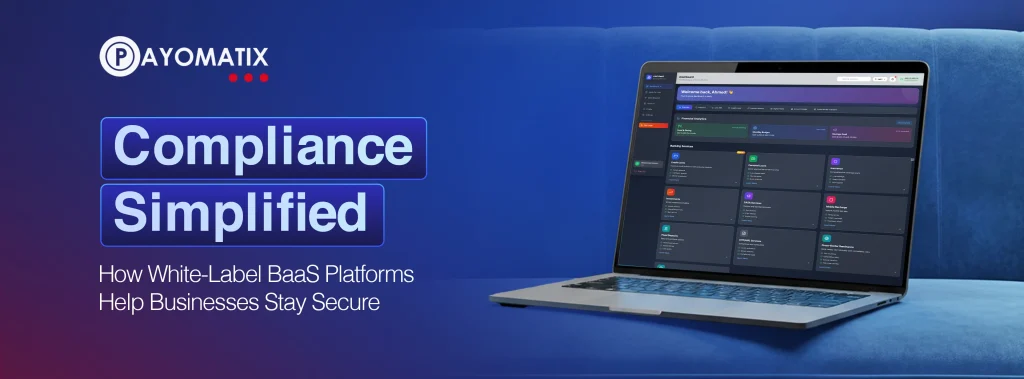In the age of digital transformation, large enterprises are no longer confined to traditional banking models. They’re expanding globally, operating across multiple jurisdictions, and dealing with complex payment infrastructures.
Managing this at scale requires more than just traditional banking relationships — it demands a tech-driven, flexible, and compliant infrastructure.
That’s where Banking-as-a-Service (BaaS) comes in. And leading the way in this transformation is Payomatix, empowering enterprises to scale global financial operations seamlessly.
Understanding BaaS for Enterprises
Banking-as-a-Service (BaaS) enables businesses to embed financial products like accounts, cards, payments, and lending into their platforms using APIs.
For enterprises, BaaS is not just about convenience — it’s about strategic control. Instead of relying on multiple banking partners and disconnected systems, businesses can unify their global operations under one API-driven infrastructure.
With Payomatix BaaS, enterprises can:
- Launch digital banking products without building backend infrastructure.
- Manage global accounts and settlements in real time.
- Offer localized payment options in different regions.
- Stay compliant with regulations across markets.
The Global Challenge Enterprises Face
Enterprises expanding internationally face three recurring challenges:
- Fragmented Payment Systems: Each region has its own payment methods, processors, and regulations. Managing them all creates operational complexity.
- Compliance Overload: From KYC and AML to data privacy and local licensing, staying compliant globally is time-consuming and costly.
- Slow Product Rollouts: Traditional financial integrations can take months — an eternity in fast-moving markets.
BaaS solves these problems through modular, API-based solutions that simplify integration and accelerate global growth.
How Payomatix BaaS Scales Enterprise Financial Operations
1. Unified Global Infrastructure
Payomatix connects multiple financial institutions, payment networks, and regulatory systems into one consolidated API ecosystem.
This allows enterprises to manage global transactions, settlements, and accounts from a single dashboard — simplifying treasury operations.
2. Real-Time Payments and Multi-Currency Support
Payomatix’s infrastructure supports multi-currency accounts and real-time cross-border settlements, helping enterprises handle global payments efficiently and transparently.
3. Built-In Compliance and Security
Regulatory compliance is built into the Payomatix framework. Every API follows KYC, AML, PCI DSS, and GDPR standards, ensuring businesses remain compliant in every market they operate.
4. Modular, Scalable Architecture
Payomatix BaaS is modular — enterprises can start with one solution, such as payments or card issuing, and expand to accounts or lending as they scale.
This ensures flexibility without overhauling existing systems.
5. Seamless Integration with Enterprise Systems
Payomatix APIs integrate smoothly with ERP, CRM, and treasury platforms. This ensures automation across finance, reporting, and reconciliation functions — reducing manual effort and errors.
Use Cases: How Enterprises Leverage Payomatix BaaS
1. E-commerce Giants
Enable local payment methods and instant settlements for customers across countries while managing global revenue through one platform.
2. Financial Service Providers
Launch new digital offerings — from prepaid cards to lending — under their brand using Payomatix’s compliant BaaS stack.
3. NBFCs and Fintechs
Automate account management, disbursements, and collections while maintaining regulatory transparency through Payomatix APIs.
4. Global Enterprises
Simplify treasury operations by consolidating multiple banking partners into one real-time, API-driven infrastructure.
Why Enterprises Choose Payomatix
- End-to-End BaaS Infrastructure: From onboarding to settlements, Payomatix handles the full financial workflow.
- Regulatory Expertise: Global compliance coverage across multiple jurisdictions.
- Faster Go-to-Market: Pre-built APIs mean reduced development and integration time.
- Scalability and Reliability: High availability architecture with enterprise-grade uptime.
- Customizable Solutions: Tailored modules that align with your specific business model.
FAQs: BaaS for Enterprises with Payomatix
1. How does BaaS help enterprises scale globally?
BaaS simplifies cross-border operations by providing unified APIs for accounts, payments, and compliance, allowing enterprises to expand without managing multiple banking integrations.
2. Can large enterprises customize Payomatix’s BaaS solutions?
Yes. Payomatix offers a modular structure that lets enterprises choose specific services — payments, cards, lending, or accounts — and customize them to fit existing workflows.
3. How does Payomatix ensure compliance across markets?
Payomatix maintains strong compliance protocols aligned with RBI, PCI DSS, GDPR, AML, and KYC requirements. Its system automatically adapts to local regulatory frameworks.
4. Does Payomatix support multi-currency or cross-border payments?
Absolutely. Payomatix supports global settlements and real-time FX conversions, helping enterprises manage transactions in multiple currencies seamlessly.
5. Why is Payomatix ideal for enterprise-scale operations?
Because it combines scalability, compliance, and flexibility — giving enterprises a single platform to manage financial services worldwide without operational friction.
Conclusion
As enterprises evolve, financial operations must evolve with them. The days of rigid, siloed banking partnerships are over — today’s leaders demand agility, speed, and compliance.
With Payomatix’s BaaS platform, enterprises can embed banking capabilities directly into their systems, scale globally, and manage complex financial ecosystems effortlessly.
Payomatix isn’t just a provider; it’s a strategic technology partner enabling global enterprises to innovate and lead in the era of embedded finance.





